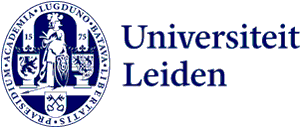
Archaeological laboratories visit Faculty of Science for sustainable ideas
In 2018 the Laboratory Efficiency Assessment Framework (LEAF) was launched in the UK. The aim of this programme was to help laboratories work more sustainably and efficiently. The initiative got a Dutch spin-off in 2021. Since then, a couple of the laboratories at the Leiden Faculty of Science have embraced LEAF. Recently, representatives of the archaeological laboratories visited their Science colleagues to see what Archaeology can do to make our labs more sustainable.
A visit on Sustainability Day
Rebecca van der Ham, lab assistant for the Bioarchaeology labs and member of the Leiden Sustainability Network, was happy to be invited. ‘We were invited to visit the labs on Sustainability Day. It was a very inspiring visit, and we got many great ideas for us to apply as well.’
One-time use
Often in laboratories, the one-time use of materials is rampant. However, this is not always necessary. ‘Take the use of buffers, a solution that can resist pH change. Usually, you will only use these once, due to contamination. But for educational practicals, contamination is less of an issue, so you can easily reuse them, instead of throwing them away.’ This is one relatively easy way to work more sustainably.

Recycling
Another aspect of working in a lab is the use of disposables. ‘We use many paper hand towels to clean. However, there is a difference between hand towels that are contaminated with chemicals or the ones that are just used to dry hands and lab equipment. The latter ones can be recycled, as long as you collect them separately. The same counts for plastic wrapping and styrofoam. We don't do that right now structurally, but we certainly can.’
A lot can be gained by changing the material of the lab equipment as well. ‘The labs that we visited make much more use of glass jars, which reduces waste and provides reused plastic tubes next to new ones. As long as they are properly washed, you can use those again.’
Saving energy
To save energy sashes of the fume cupboards are kept shut, leftover ice is returned to the ice machine saving both energy and water, and one of the -80°C freezers is now set at -70°C. ‘These are very simple solutions that can make a huge difference. A simple yet brilliant way to reduce energy is to put timers on screens preventing them from staying turned on all night when software of analytical equipment overwrites the automatic switch off.’

Grassroots
Interestingly, the strategies used to make the labs more sustainable are not imposed from above. Instead, they are mainly based on grassroots initiatives. ‘In these labs, they have posters on which they present the measures taken, and the ideas that are still pending. Anyone can add a post-it with ideas to these posters. This can also be used to track progress. Notes in the lab about the available sustainable alternatives also help people to choose the green option.’
The next step is to explore whether these sustainable steps can be taken at the Bioarchaeology labs.
